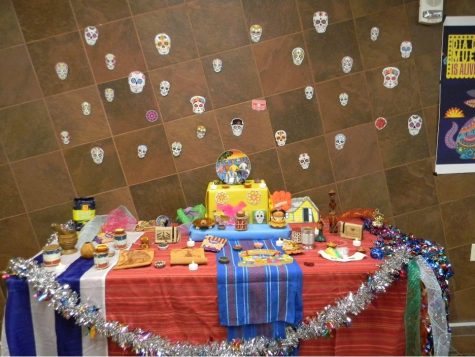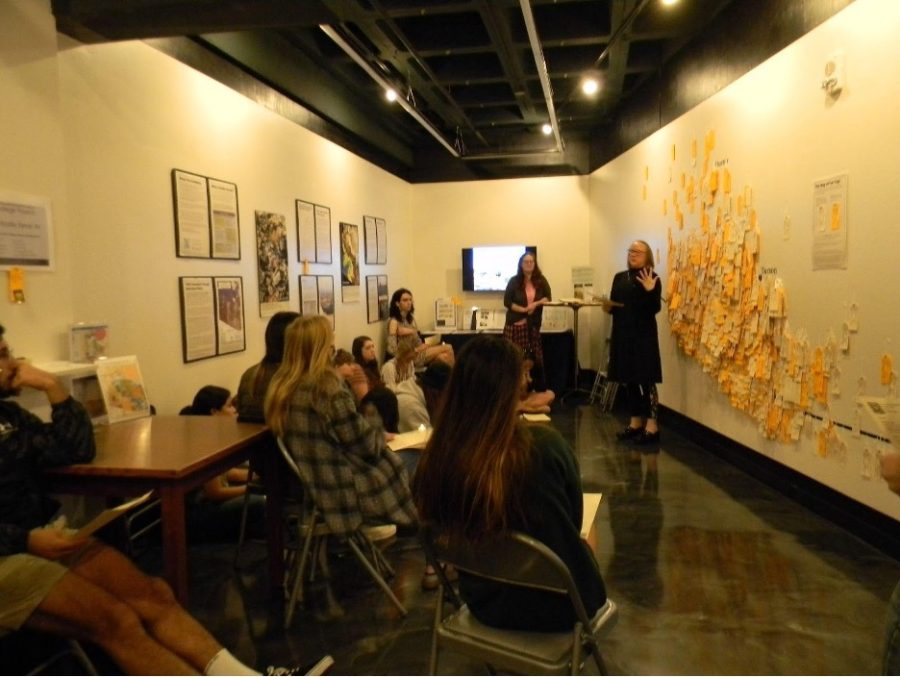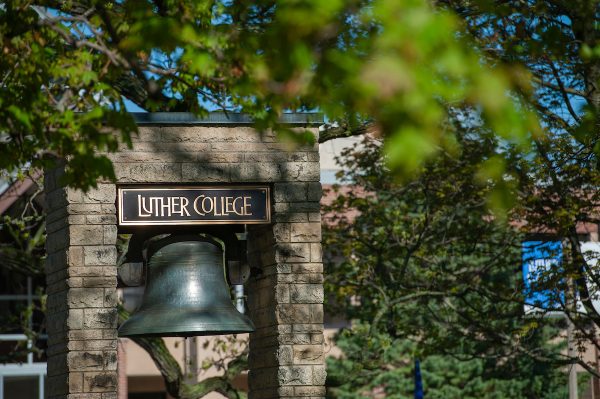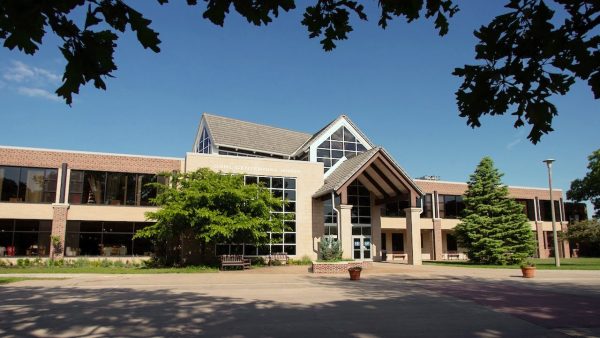A Time for Remembrance: Luther Hosts a Dia de Muertos & Hostile Terrain Vigil
On Wednesday, November 2, Manager of the Anthropology Lab and Collections and the Museum Studies Program Director Destiny Crider hosted a candlelight vigil in the Dahl Centennial Union Art Gallery. The vigil took place to commemorate Dia de Los Muertos and to honor the lives memorialized by the Hostile Terrain art installation.
Salome Valdivieso (‘23) attended the event and participated in the reading of the Prayer of Remembrance. The Prayer of Remembrance serves as a prayer of unity between the living and dead. She spoke about how the vigil impacted her, and how important it is to have this event.
“I think the event was very touching,” Valdivieso said. “I was grateful the Latino community had a space to reflect and allies there to take part in our culture, learn about our traditions and the issues that surround our identity. I think it is of key importance for people to see that this is happening in the United States. I think a lot of people are oblivious to the fact that there are people dying everyday at the border. It is affecting our community.”
At the start of the vigil, students from the Latines Unides organization said a Blessing of Light as the attendees read along. This blessing was followed by a song titled “Ayudanos. Oh Dios.” The song asks for God to help and to bring peace. Crider played a video remembering the names of those lost their lives attempting to cross the U.S.-Mexico border. Director of College Ministries and College Pastor Melissa Bills provided a space for students to reflect and place their candles next to the wall that displayed the tags. Students were seen teary eyed as they sat in silence.
Dia de Los Muertos is a widely celebrated holiday in Latinx culture. The holiday is meant to remember those that have died. Celebration entails creating home altars with candles, sweet bread, and other items of significance to the individual being remembered.
Hostile Terrain 94 is an art project organized by the Undocumented Migration Project led by anthropologist Jason De Leon. The exhibition memorializes those who lost their lives crossing the U.S. border from Mexico. Over 3,200 toe tags are hung across the map of the route migrants have taken through the Sonoran Desert. Many of the deaths are underreported since many remains will never be found. The toe tags show where the remains of the individual were found. The project was created to raise awareness about the lives lost since 1994 as a result of a Border Patrol Policy known as “Prevention Through Deterrence” or PTD. The purpose of this policy was to make border crossing so dangerous that people would not attempt it.
Posters throughout the exhibition explain the various types of violence migrants are exposed to. Many of the tags list the cause of death as ‘exposure to the elements.’ Other tags list the cause as “unknown,” since only skeletal remains were found. Orange tags represent unidentified human remains while the white tags represent the individuals that have been identified by name. Students were encouraged to write out a note tag to hang for the individuals who lost their lives in recent years.
Crider expressed the importance of this exhibition being brought to the midwest, and more specifically to the Luther College community.
“We have a lot of students and community members in this part of the United States that the Arizona/Mexico Border is just something they hear about on the news,” Crider said. “It feels very far removed. This was my backyard for fifteen years and I was not aware of this when I lived there. This was a chance to bring up this issue that seems so far away and show how it manifests here.”
The Hostile Terrain exhibition is open upon request by emailing Crider at [email protected]. Each session is around 45 minutes and provides instructions on how to process your tag. Time for reflection and discussion is also included.







